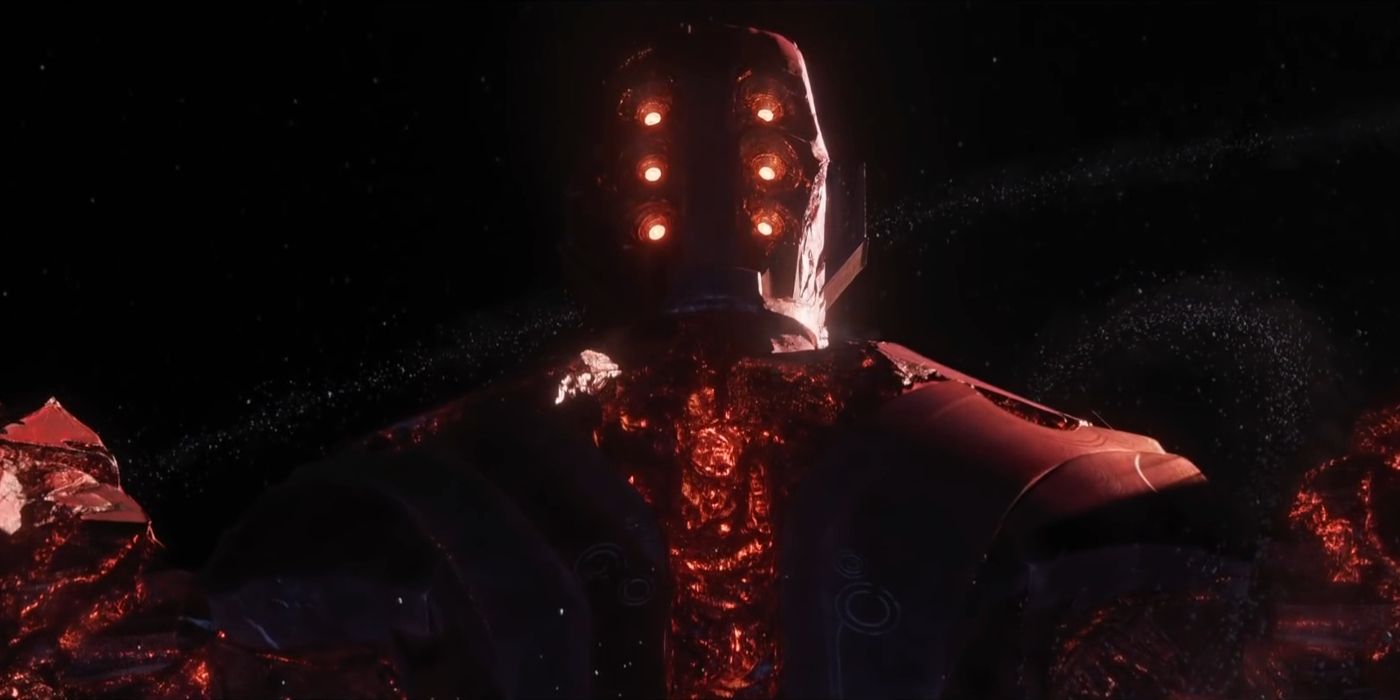WARNING: The following contains spoilers for Eternals, now in theaters.
Marvel Studios' Eternals is a film that shines a light on the entire history of the Marvel Cinematic Universe. In the film, audiences witness the dawn of time, as the Eternals travel to Earth to protect humanity from the Deviants. What's more, the film gives a new dimension to Earth's purpose in the cosmic tapestry of the MCU when Arishem the Judge reveals that the planet had long ago been chosen to house a seed that would, one day, become a new Celestial.
Indeed, this revelation is what propels the story forward, as the Emergence, the rise of this new Celestial, becomes imminent. In a matter of days, the Eternals need to stop the birth of Tiamut and prevent the total destruction of Earth. And, as a result, the titular team end up creating what may become the Avengers' future base of operations.
In Eternals, thanks to the speedster Makkari, the titular team of superheroes is able to locate the birthing place of Tiamut, a small volcanic island in the middle of the Indian Ocean. After they travel there, the super-powered family attempts to prevent the rise of the titanic cosmic god. As they combine their powers, Tiamut slowly begins to emerge, his fingers, hand and head rising from the water. The Celestial is impossibly enormous, but, thankfully, Sersei is able to use the Uni-Mind and her transmutation powers to halt the awakening of the cosmic god.
Transformed into ice, the Celestial ends up as nothing more than a gigantic statue in the middle of the ocean. Due to its gargantuan size, the frozen Tiamut becomes a permanent fixture on the face of the Earth and is the subject of all manner of news coverage. This is as expected, of course, considering that the Indian Ocean is now home to a partially risen Celestial encased in ice. But it just so happens that something similar to this has recently happened in the comics.
In 2018, the Avengers series gave Earth's Mightiest Heroes a new base of operations in the form of the frozen body of a dead Celestial. This Celestial, named the Progenitor, had died on Earth billions of years ago. It lay at the bottom of the water in the North Pole for eons until, in the present day, the Avengers defeated the Final Host, the Dark Celestials. As a thank you, the First Host rose the Progenitor from the water and offered it to the Avengers as their new home. The team of superheroes then moved into the deceased Celestial, and it became Avengers Mountain.
It's been three years since this development, and the Avengers are still using the Celestial as their base. It holds impressive technology they are still learning to harness and control, and it has given them a helping hand in fighting more cosmic threats. Now, in the MCU, the remains of Tiamut might be located in the Indian Ocean instead of the North Pole, but it's still a half-raised, frozen Celestial in the middle of the ocean. For all intents and purposes, it looks like this could become the MCU's version of Avengers Mountain. After all, while the status of the team as a whole remains a bit unknown as of this time, the Avengers are in need of a new base of operations after Thanos destroyed their compound at the end of Avengers: Endgame.
A new base of operations located inside Tiamut would not only change things up in a big way, but it would also open the door for a much bigger, and more efficient, team of Avengers. With a Celestial serving as their home, the Avengers could use this in future movies to take on increasingly cosmic threats. With other alien races and Celestials still posing a grave threat, Tiamut, as a base of operations, could bring the Avengers to a whole other level in terms of response.
To see the creation of the Avengers' next potential base, Eternals is in theaters now.



